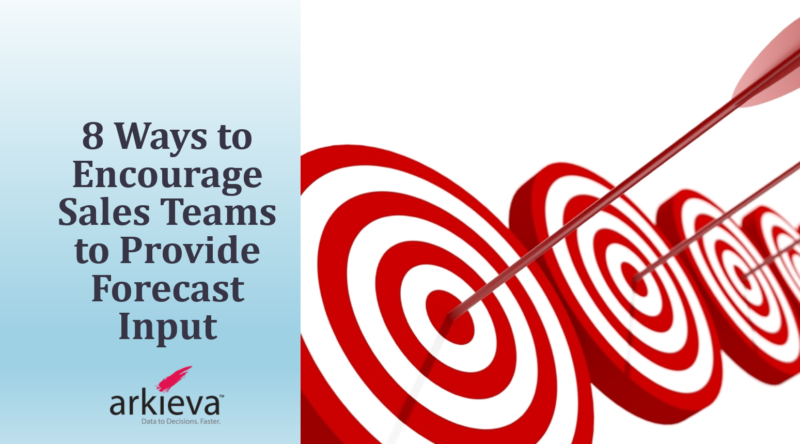Sales is a fast-paced business; people who aren’t focused on the here and now usually lose out on sales. As mentioned in Jelle’s blog, sales persons would rather be out in the field selling, which is the reason why they feel it would be a waste of their resources sitting in their office forecasting. Yet, forecast inputs from sales teams, when done appropriately, can increase the accuracy of the forecast by 10% – 20%. Here are 8 ways to encourage sales teams to provide forecast input.
- Give them proper software tools – make sure they are easy to use, do not require a lot of training, and are compatible with their travel. For example, a tool that can work the way an email program works (meaning one can compose emails while offline and sync up by sending receiving when online) can be a good way for a tool designed for a mobile sales team. Likewise, a software that works on a mobile platform such as a tablet might be more appealing to the sales teams.
- Gamify the process – Sales by its very nature is competitive. Forecasters should tap into this spirit and create ways to make the forecasting a competition, complete with some monthly awards and bragging rights.
- Differentiate between trivial many and vital few – Coach the sales team on what is important and what is noise. Enable them to filter on the truly important stuff and provide forecasting input for those combinations. This will reduce their forecasting workload and they will be able to reciprocate and provide better input.
- Help them – Recognize that forecasting is not something that excites them and therefore provide any help that you can provide to remind them of the importance of the forecast as well as the deadlines. This can be done via alerts and warnings.
- Encourage high consequence changes – Encourage them to provide inputs where they see a need for a big change because of something they know for sure and not get involved in tweaking the numbers via small changes. This idea makes them think more about the change they are about to make and if they are not sure, they will not make the change.
- Ask for reasons – A sales person who knows good reason(s) for his or her change typically is providing a better forecast. Examples of good reasons can be: I know client is taking a shutdown. Examples of bad reason can be: I am changing the number from 39 to 50 because that is what fits on a truck.
- Establish the N1P2 rule (Check once for negative change to forecast; twice for a positive change to the forecast) – Research tells us that negative forecast changes increase the overall forecast accuracy by a lot more compared to positive forecast changes.
- Coach them on triangulation – Very often sales people get caught up in their theories of the marketplace. Often, this type of view gets amplified because of shared belief systems and talking points inside organizations. Sales team who look at their changes from multiple angles are able to fight this tendency better.
Arkieva is interested in gaining insights on the forecasting process from members of the sales team and your participation would be appreciated.
Click here to take our short survey!
Like this blog? Follow us on LinkedIn or Twitter and we will send you notifications on all future blogs.






